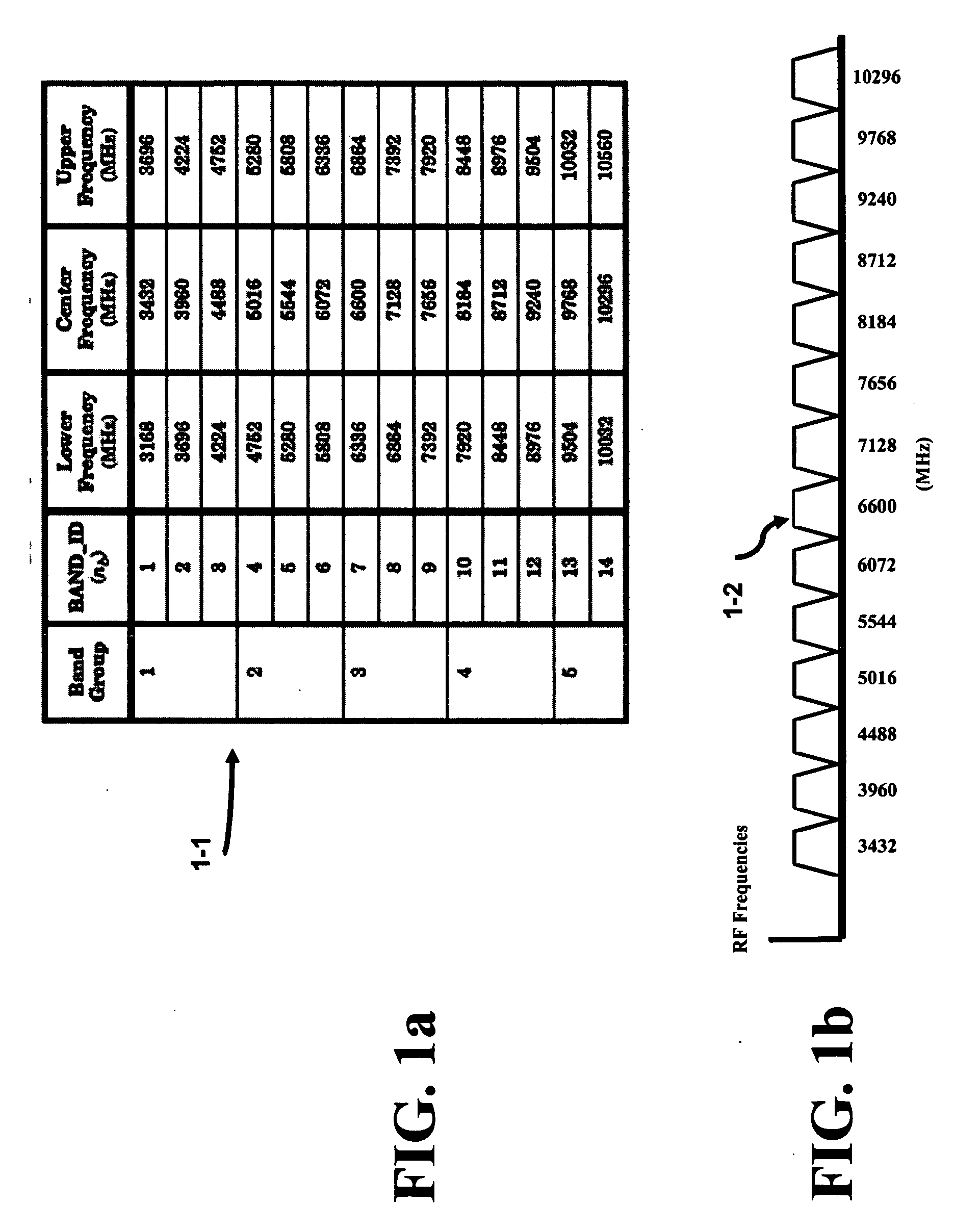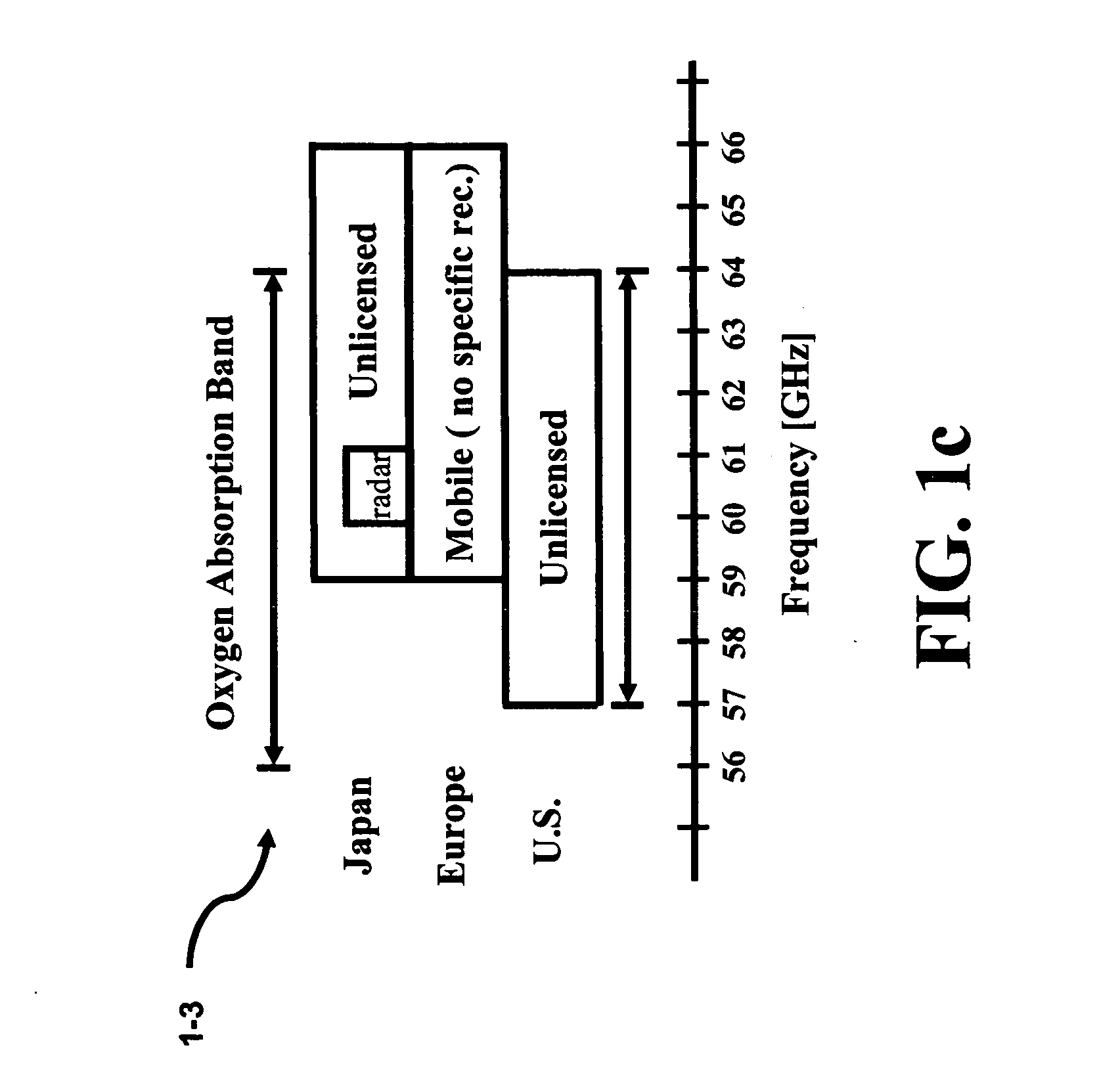Method of frequency planning in an ultra wide band system
- Summary
- Abstract
- Description
- Claims
- Application Information
AI Technical Summary
Benefits of technology
Problems solved by technology
Method used
Image
Examples
case 2
[0078] A WLAN Interference Signal
[0079] In PAN applications, besides a UWB interfering signal, WLAN devices (e.g., 802.11) can create an undesired interference signals. The WLAN output power levels can be as high as 20 dBm within a bandwidth of 20 MHz. This high power level will cause the UWB receiver system to fail if the WLAN transmitter is 1 m away and the WLAN signal falls right on top of either image or signal channel. The WLAN signal desensitizes the LNA and mixer stages, which can become fully saturated. Therefore, the UWB receiver needs to be cleaver enough to avoid the WLAN interference signal or increase the linearity of the LNA and mixer. Usually, the linearity can not be achieved without a compromising effect such as designing a more power dissipative circuit or using more silicon area. Both of these design issue constraints can be costly. Another approach to avoid a WLAN interference signal is preferred.
[0080] A Wireless LAN Avoidance Scheme
[0081] One possibility is ...
PUM
 Login to View More
Login to View More Abstract
Description
Claims
Application Information
 Login to View More
Login to View More - R&D
- Intellectual Property
- Life Sciences
- Materials
- Tech Scout
- Unparalleled Data Quality
- Higher Quality Content
- 60% Fewer Hallucinations
Browse by: Latest US Patents, China's latest patents, Technical Efficacy Thesaurus, Application Domain, Technology Topic, Popular Technical Reports.
© 2025 PatSnap. All rights reserved.Legal|Privacy policy|Modern Slavery Act Transparency Statement|Sitemap|About US| Contact US: help@patsnap.com



